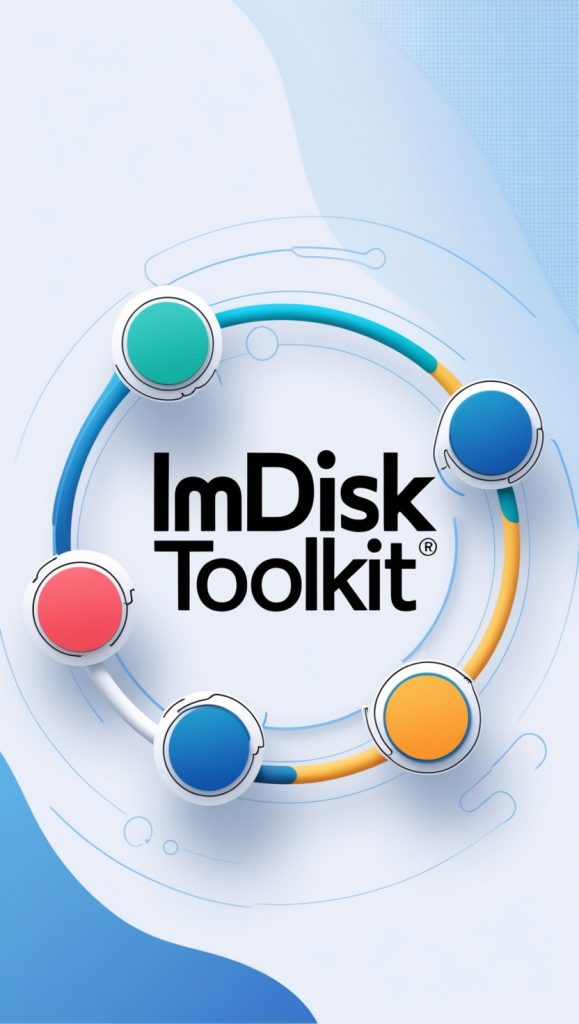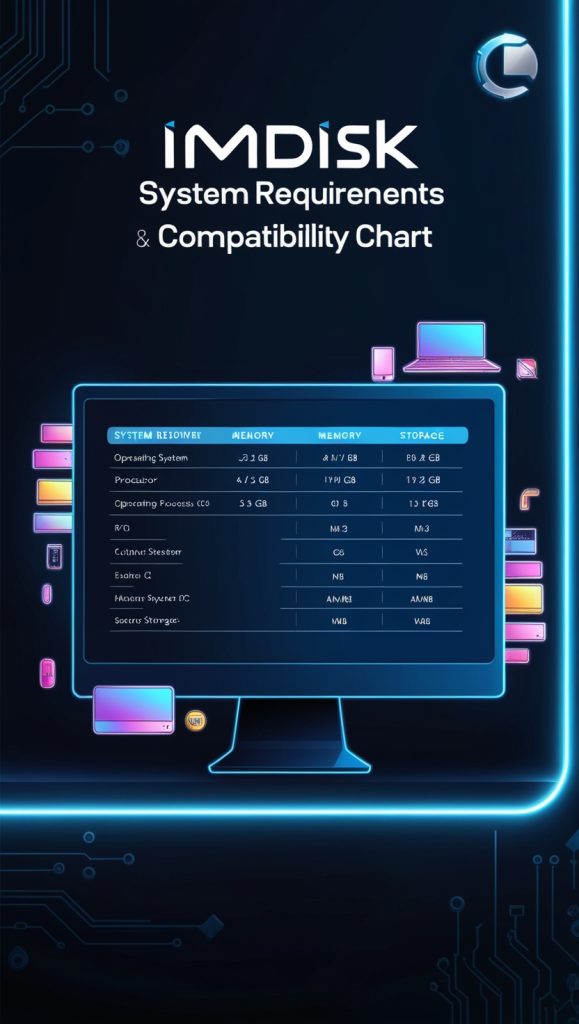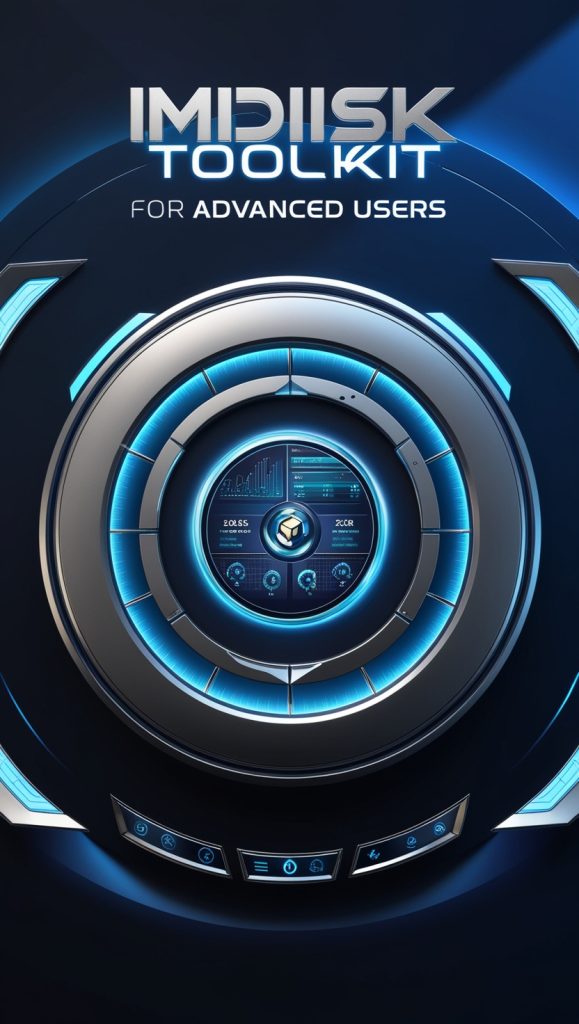ImDisk Toolkit - Free RAMDisk & Image File Mounting
ImDisk Toolkit simplifies virtual disk creation and management with an easy-to-use interface, enhancing performance with RAM disks.

ImDisk Toolkit is a powerful and versatile tool designed for managing virtual disks on your computer. It allows users to create, mount, and manage virtual drives, including RAM disks, using a graphical user interface (GUI) that simplifies the process. With ImDisk Toolkit, users can easily allocate portions of their system’s RAM or hard drive to create virtual disks, which can be used to store data or improve system performance.
Key Features of ImDisk Toolkit

GUI for Management
User-friendly interface simplifies virtual disk management, making it accessible.

Virtual & RAM Disks
Easily create virtual disks and RAM disks to optimize system performance and speed up.

Manage Virtual Drives
Effortlessly mount, extend, and manage virtual drives, allowing for quick adjustments.
How to Use ImDisk Toolkit

Launch ImDisk Toolkit
- Open the ImDisk Toolkit from your desktop or start menu.
- The main interface will display various options for managing virtual disks.
Create a New Virtual Disk
- Click on the “Mount New” option.
- A dialog box will appear prompting you for various parameters.
Set the Disk Size
- In the dialog box, enter your desired size for the virtual disk. You can specify the size in MB or GB.
- Ensure the size aligns with your intended use to optimize performance.
Choose a Drive Letter
- Select a drive letter from the dropdown menu. This letter will be used to access the virtual disk within your system.
- Choose a letter that is not already in use to avoid conflicts.
Select File System Type
From the same dialog box, choose the desired file system for your virtual disk:
- FAT32: Suitable for compatibility with various systems and devices.
- NTFS: Recommended for larger files and better security features.
- Click “OK” to create the virtual disk with your specified settings.
Mount an Existing Disk Image
- To mount an existing disk image, go back to the main interface and select the “Mount” option.
- Browse to the location of your disk image file (such as ISO or IMG).
- Choose the desired options for mounting (like assigning a drive letter) and click “OK.”
Extend Disk Size
- To extend the size of an already mounted virtual disk, select it from the list in the main interface.
- Click on the “Extend” option.
- Enter the additional size you want to add and confirm.
- This will increase the disk size without losing any existing data.
Save a Disk Image
- To save the current state of a virtual disk, select it from the list and choose the “Save” option.
- Specify the destination where you want to save the image file, and click “OK.”
- Your disk image will be stored for future use.
Load a Disk Image
- To load a previously saved disk image, select the “Load” option from the main interface.
- Navigate to the saved image file and select it.
- Click “OK” to mount the disk image and access your data.
Advantages of Using ImDisk Toolkit
Performance Improvements with RAM Disks
One of the standout features of ImDisk Toolkit is its ability to create RAM disks. A RAM disk uses your computer’s RAM as temporary storage, offering significantly faster read and write speeds compared to traditional hard drives or even SSDs. This can result in noticeable performance boosts for tasks that require frequent data access, such as video editing, gaming, or running large databases. Since RAM is volatile memory, these disks are ideal for temporary files or cache storage that doesn’t need to be saved after a reboot.
Flexible Disk Management
ImDisk Toolkit provides flexible options for managing virtual disks, giving users full control over disk size, file systems, and drive letters. You can create, mount, extend, and manage virtual disks effortlessly, all through its intuitive graphical user interface.

Whether you need to create a temporary virtual disk for a specific task or extend the size of an existing virtual drive, ImDisk simplifies the process. It also supports a wide variety of image formats, ensuring compatibility with many different systems.
Data Backup and Recovery Capabilities
ImDisk Toolkit allows users to create image files of their disks, which can be saved and loaded at any time. This feature is incredibly useful for data backup and recovery purposes. By storing copies of your virtual or physical drives as image files, you ensure that your data is protected and can be restored in case of system failures or accidental deletions. Whether you’re working with sensitive information or simply want to safeguard your files, ImDisk offers an easy way to manage and recover data efficiently.
Ease of Use for Both Beginners and Advanced Users
Despite its powerful features, ImDisk Toolkit is designed to be user-friendly, making it accessible for beginners while still offering advanced functionalities for experienced users. Its graphical user interface (GUI) streamlines disk creation and management, reducing the learning curve for first-time users. At the same time, advanced users can take advantage of its command-line interface (CLI) for more customized control and automation of tasks. This balance between simplicity and depth makes ImDisk an ideal tool for a wide range of users, from casual PC owners to IT professionals.
Advantages of Using ImDisk Toolkit
Supported Operating Systems
ImDisk Toolkit is designed to run on various versions of the Windows operating system. Supported versions typically include:
- Windows 10: All editions, including Home, Pro, and Enterprise.
- Windows 8 and 8.1: Both standard and Pro editions.
- Windows 7: Available for both 32-bit and 64-bit versions.
- Windows Server: Compatibility with various Windows Server editions (2008, 2012, 2016, etc.) may also be provided.
Users should ensure they are using a supported version to take full advantage of ImDisk Toolkit’s features.
Recommended Hardware Requirements
Minimum Hardware Requirements:
- Processor: 1 GHz or faster (x86 or x64 architecture)
- RAM: 512 MB of RAM
- Storage: At least 100 MB of free disk space for installation
- Graphics: Any graphics card capable of supporting a basic Windows GUI

Recommended Hardware Requirements:
- Processor: Dual-core processor or better for optimal performance
- RAM: 2 GB or more for handling larger virtual disks and multiple tasks
- Storage: SSD (Solid State Drive) for faster read/write speeds, especially when using RAM disks
- Graphics: DirectX 9 capable graphics card for better GUI performance
Meeting or exceeding the recommended specifications will enhance the user experience, especially when managing multiple virtual disks or running resource-intensive applications.
Compatibility with Other Disk Management Tools
ImDisk Toolkit is designed to work alongside other disk management and system utilities. Its compatibility features include:
- Image File Formats: It supports various image file formats like ISO, IMG, and VHD, allowing users to mount disk images created by other software.
- Integration with Other Tools: ImDisk Toolkit can be used in conjunction with other disk management tools such as:
- Disk Management: Windows built-in tool for managing partitions and drives.
- EaseUS Partition Master: For users looking to manage disk partitions alongside ImDisk.
- AOMEI Partition Assistant: Another third-party tool that can work in tandem with ImDisk Toolkit.
This compatibility makes it easier for users to incorporate ImDisk Toolkit into their existing workflows, allowing for seamless integration and enhanced functionality when managing virtual disks and images.
ImDisk Toolkit for Advanced Users

Command-line Interface (CLI) Functionality
The Command-line Interface (CLI) in ImDisk Toolkit allows advanced users to interact with the toolkit through command-line commands rather than a graphical user interface. This feature enables:
- Batch Processing: Users can execute multiple commands in succession, making it ideal for repetitive tasks.
- Remote Management: CLI commands can be executed over remote connections, allowing for virtual disk management on servers or other machines without a GUI.
- Scripting: Users can incorporate CLI commands into scripts, automating tasks such as disk creation, mounting, or configuration changes.
Customizing Virtual Disk Settings for Specific Tasks
ImDisk Toolkit allows for extensive customization of virtual disk settings, enabling users to tailor their virtual disks to meet specific needs. Customization options include:
- File System Selection: Users can choose different file systems (e.g., FAT32, NTFS) based on the requirements of the application or use case.
- Sector Size: Users can specify sector sizes for better performance with certain applications, especially for databases or file systems that benefit from larger sectors.
- Memory Allocation: Advanced users can adjust how much RAM is allocated to a RAM disk, optimizing performance based on available system resources.
Automating Tasks with Scripting
Automation is a key advantage of using ImDisk Toolkit, especially for advanced users managing multiple virtual disks or performing regular tasks. Users can:
- Create Scripts: Write scripts using batch files, PowerShell, or other scripting languages that include CLI commands for ImDisk Toolkit to automate disk management tasks.
- Schedule Tasks: Use task scheduling tools to run scripts at specific times or under certain conditions, such as mounting a disk at startup or automatically cleaning up temporary RAM disks after use.
- Integration with Other Scripts: Combine ImDisk commands with other system scripts to create comprehensive workflows, such as preparing an environment for software testing.
Integration with Other System Utilities
ImDisk Toolkit can seamlessly integrate with other system utilities and applications, enhancing its functionality. This integration includes:
- Backup Tools: Users can integrate ImDisk with backup solutions to create snapshots of virtual disks or mount backup images quickly.
- Virtual Machine Software: ImDisk can work with virtualization software (e.g., VMware, VirtualBox) to manage virtual disks that are used by virtual machines, providing flexible disk management.
- Performance Monitoring Tools: Users can combine ImDisk with monitoring tools to analyze the performance of RAM disks versus traditional disks, helping in resource allocation and optimization.
- Custom Applications: Developers can use ImDisk’s functionality within their applications, allowing for the creation and management of virtual disks directly from custom software.
Frequently asked questions (FAQs)
It is compatible with various versions of Windows, including Windows 7, 8, 10, and 11.
You can create RAM disks, disk images, and virtual disks based on physical drives.
Yes, ImDisk Toolkit is available for both 32-bit and 64-bit Windows systems.
You can download it from the official website and follow the installation instructions provided in the setup wizard.
Yes, administrative privileges are required to install the software and create virtual disks.
Yes, you can uninstall it like any other application via the Control Panel or Settings.
Open ImDisk Toolkit, select “Create a New Virtual Disk,” and follow the prompts to specify the size and drive letter.
Yes, you can extend the size of a virtual disk through the toolkit’s management interface.
You can format virtual disks with FAT32, NTFS, or other supported file systems.
Use the “Mount New Virtual Disk” option and select the image file you wish to mount.
The size limit depends on your system’s RAM and the available disk space; typically, RAM disks are limited by the amount of physical RAM.
RAM disks offer faster read/write speeds compared to traditional hard drives, improving performance for temporary data storage.
Use the “Save” option in the ImDisk Toolkit to create an image file of the virtual disk.
Yes, you can create disk images and save them for backup or recovery purposes.
Use the “Save” option in the ImDisk Toolkit to create an image file of the virtual disk.
Check if the disk image file is corrupt, ensure you have the right permissions, or restart the toolkit and try again.
Ensure it is mounted properly; you may also need to check Disk Management in Windows.
Yes, you can create and manage multiple virtual disks at the same time.
Yes, it includes a CLI for advanced users to automate tasks and customize settings.
Yes, you can use scripts to integrate it with other applications for enhanced functionality.
Yes, you can create scripts using the command-line interface for automation.
While the toolkit itself does not encrypt data, you can use file system encryption (like BitLocker) on the virtual disks.
Closing the toolkit does not affect mounted virtual disks; however, data on RAM disks will be lost if the system is restarted.
Official documentation is available on the ImDisk Toolkit website and GitHub page.
Yes, there are user forums and communities online where you can ask questions and share experiences.
Yes, you can report bugs on the official GitHub repository for ImDisk Toolkit.
Schema
ImDisk Toolkit - Free RAMDisk & Image File Mounting

Download ImDisk Toolkit to create RAM disks and mount image files easily. This all-in-one tool supports various formats for Windows. #ImDisk
Price: Free
Price Currency: $
Operating System: Windows 7, 8, 8.1, 10, or 11
Application Category: Softwate
4.3